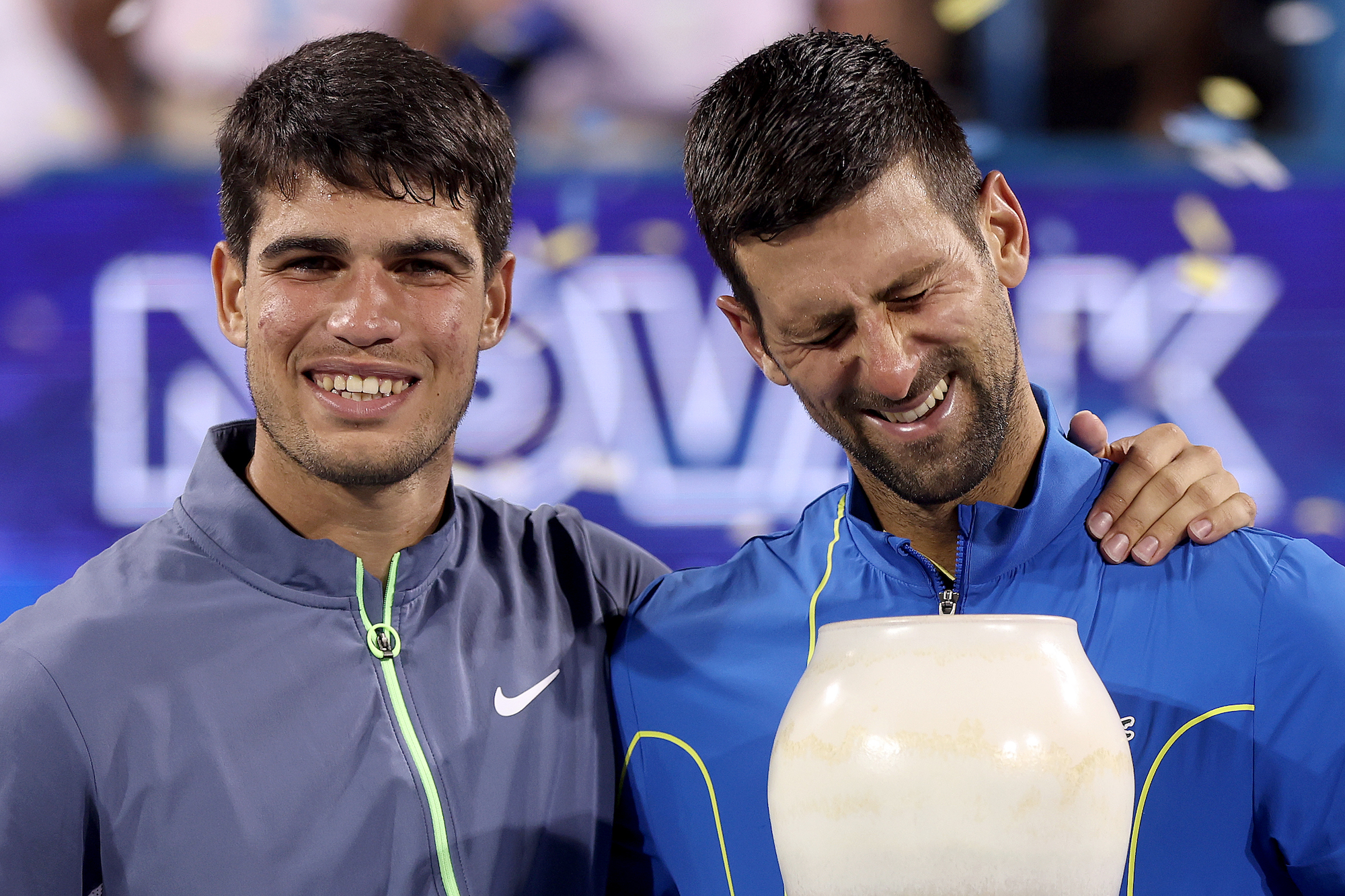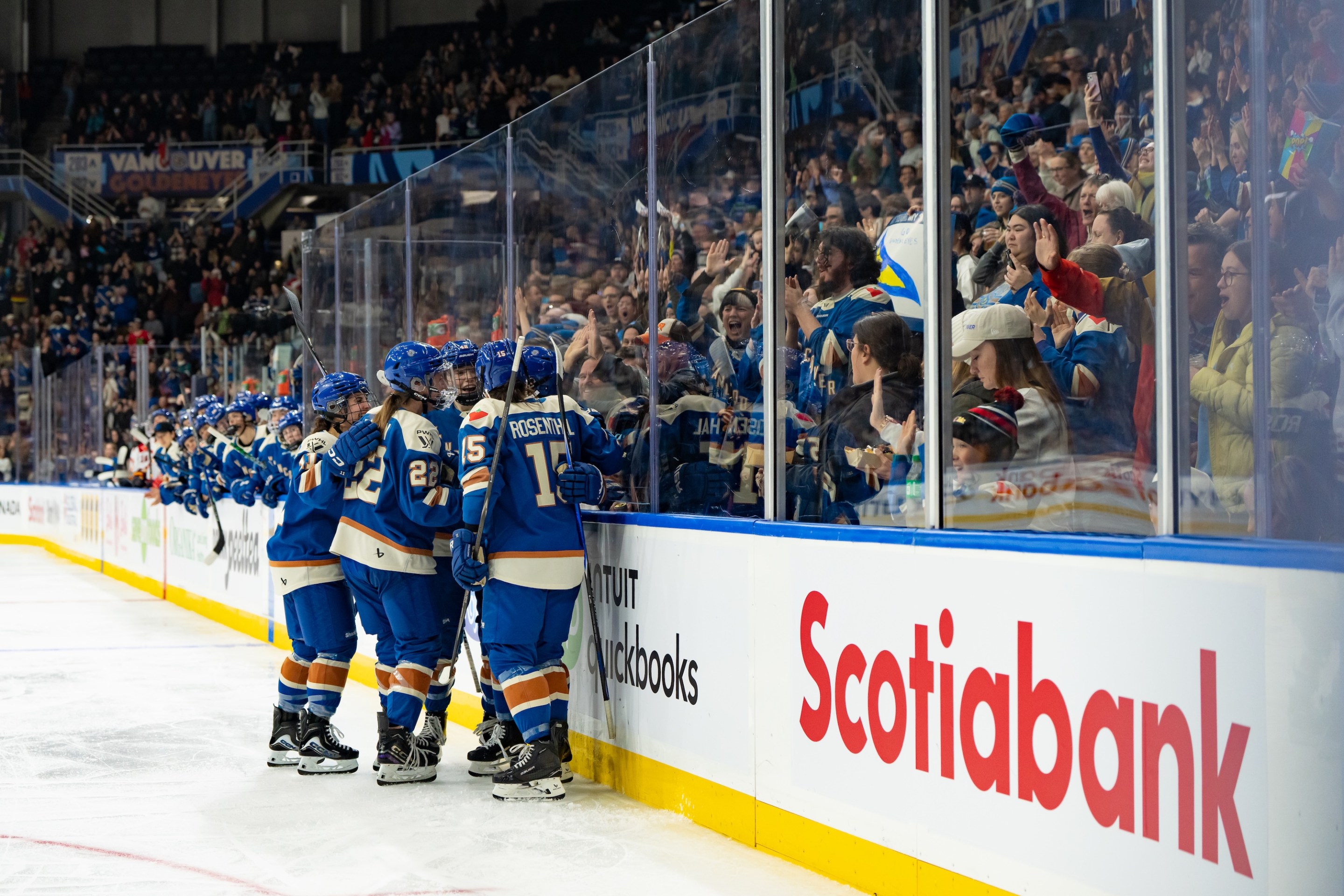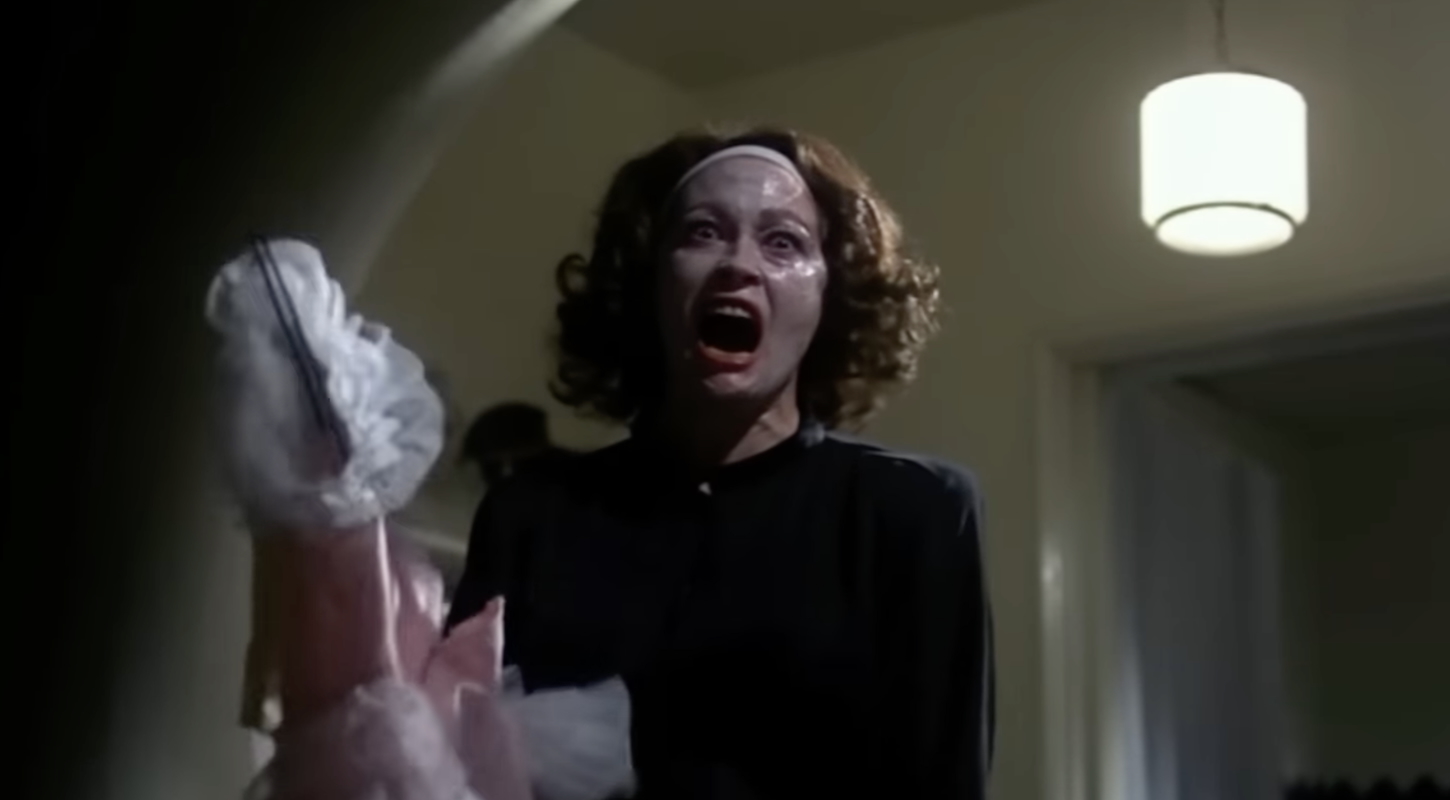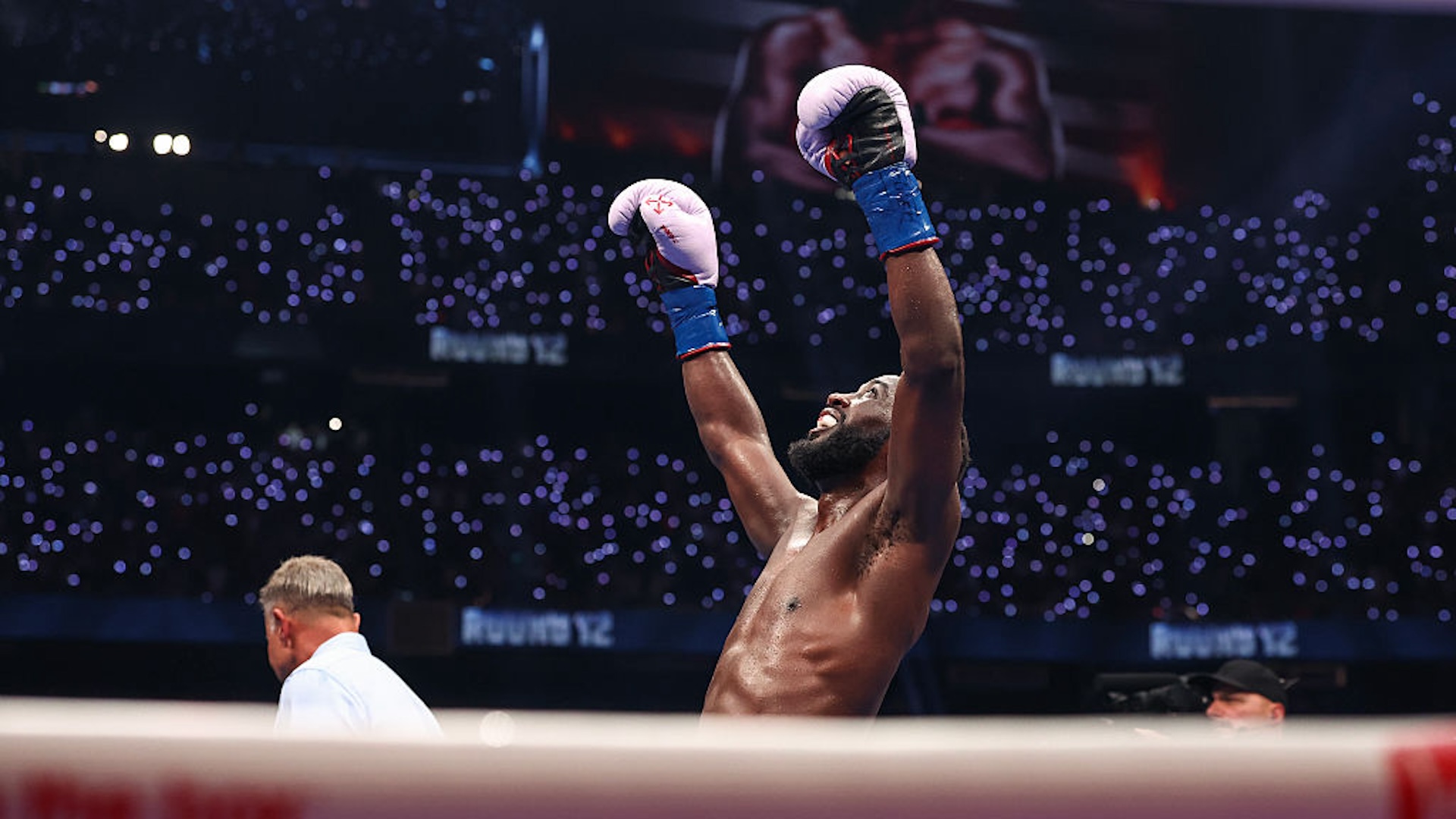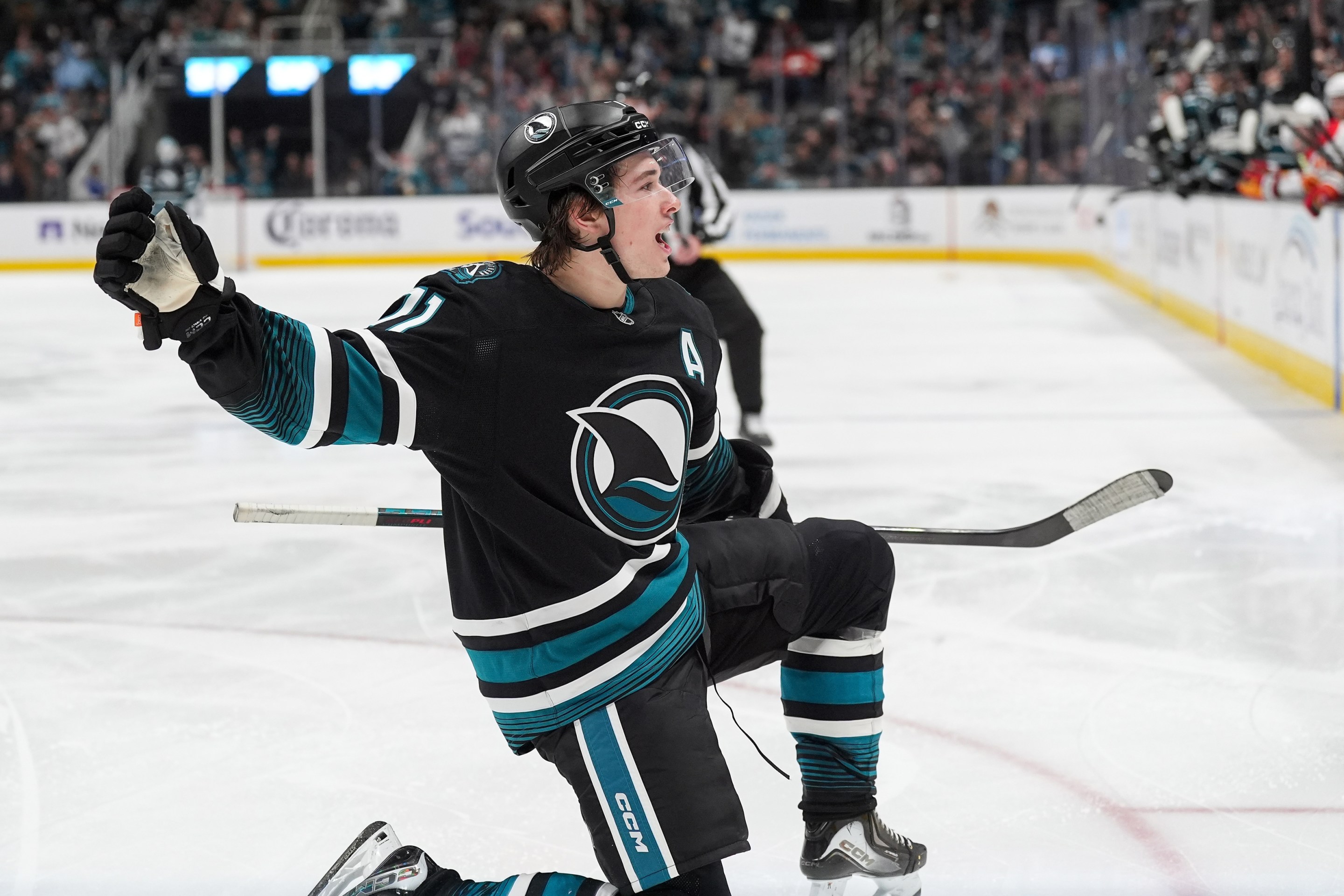Before every tennis major, the organizers construct the bracket. Some randomness is baked into this process, but the first two steps are eternal: At the top of the draw, they write in the No. 1 seed, and at the bottom, they write in the No. 2 seed. There are 126 other players lurking between them, but in this year's men's field for the U.S. Open, all those names blur into the backdrop.
The name on top is Carlos Alcaraz, defending champ and 20-year-old boy-king of tennis; on the bottom is 36-year-old Novak Djokovic, who has accomplished more in the sport than any man ever. They can meet only in the final. Alcaraz and Djokovic have played three times this summer, leaving sickeningly vivid highlights in their wake. Not since the peak of the Federer-Nadal rivalry has a major felt so defined by its top two seeds.
The difference here is the timeframe. Roger Federer and Rafael Nadal were contemporaries, set to clash for 15 years, an abundance of mind-melting riches. But the roiling rivalry between Alcaraz and Djokovic is precious, because one man is on his way up (as hard as it is to imagine him improving on his present mastery), and the other has begun his gradual descent (as hard as it is to imagine his supremacy ever fading). Aging means this rivalry can only last for so long. Every match, like the three-set classic Djokovic won in the Cincinnati Masters final this past weekend, feels like a gift.
Every tennis rivalry has its own flavor, depending on how the players' idiosyncrasies mesh together, drawing specific strains of genius out of each other. Djokovic and Alcaraz are both such well-rounded players that it amounts to a maddeningly broad mandate for both men: Maintain world-historic offense and defense for as long as you can muster, push your endurance to the extreme, and pray that the math shakes out in your favor.
"The feeling that I have on the court reminds me of facing Nadal when we were at our prime," Djokovic said in a press conference after their most recent encounter. "Each point is a hassle, each point is a battle—you feel like you're not going to get five free points in the entire match." Athletically, Djokovic might have fallen a notch from his apex a decade ago, but he's still quick and supple enough to hold up to a ferocious man-child with less mileage on his legs. Time has sanded away some of the Serb's physical advantages, but it's granted him fresh technical and psychological ones.
The clearest contrast between the two is in style. Over the years, Djokovic has streamlined his tennis to an enduring template. He starts points with the tour's best-ever return-of-serve, and a serve deadly in accuracy if not in raw power. In rallies, he prefers a steadier, attritional approach, trusting in his deep shots and careful change of direction. It's not always highlight-reel fare, except to an expert eye, but that doesn't matter. There's no meddling with the approach that has won him 23 Slams and 39 Masters titles.
Alcaraz is the more experimental player, prone to rattle the rhythm of a rally with a brash creative risk—a drop shot, a freakish angle, an ambush at the net. When they play, the young Spaniard must test his inventive offense against the hardiest defender ever. At this stage, Djokovic has nothing left to learn; Alcaraz seems to yank a new trick out of his pocket every three days. Although they're not exactly master-and-apprentice with respect to tactics, they are in terms of absolute skill level. Each time they meet, they produce points that could belong only to them. For evidence, check out their best collaborations from last Sunday's bout:
Their head-to-head record is now split at 2-2, and three of those meetings happened in the last three months, which has brought their rivalry to the center of the tour's web of narratives. In the first matchup, May 2022 on clay in Madrid, Alcaraz was a 19-year-old who'd just abruptly seized control of the tour. He had pulled off a three-set defeat of Nadal, the king of clay, and he dispatched Djokovic in a tricky three-set semifinal. But that wasn't the best tennis that late-empire Djokovic has to offer. He was slow to find his form in 2022, having missed the year's first major after a Kafkaesque deportation saga in Australia, and burped up a few uncharacteristic losses heading into Madrid. This first meeting was an appetizer, a young insurgent besting a legend in B-minus form, in a shorter best-of-three format.
Alcaraz and Djokovic would not cross paths for the rest of 2022. The second meeting was this past June, again on clay, with the higher stakes of the French Open. In that semifinal match, Alcaraz met the full brunt of his scariest opponent to date: Djokovic, deep in a major, having already honed his control over the course of the tournament. For Alcaraz, the toll was as psychic as it was corporeal. After two psychedelic sets, the 20-year-old suffered full-body cramps. He lost his legs, and the remainder of the match was a formality. After his four-set loss, Alcaraz chalked up the cramps not to insufficient conditioning, nutrition or hydration, but to the tension of the moment. "I started the match really nervous. The tension of the first set, second set, it was really intense," he said in post-match press.
By the time they met again, five weeks later at Wimbledon, Alcaraz appeared to have settled the problem of tension. He also appeared to have solved grass-court tennis despite minimal experience on the surface. Right now Alcaraz is tennis's quickest learner, a smiley prodigy who seems to extract long-term wisdom from every set he plays. With just 46 hours of match play, he had internalized the nuances of movement on slippery grass enough to win the surface's biggest title against its seven-time champ. In that Wimbledon final, Alcaraz held an exceptional level of tennis throughout five sets. Cramps did not mar this nearly five-hour fight. Djokovic has said on multiple occasions that he savors the best-of-five format against younger players, secure in his ability to outlast them regardless of an early deficit. But Alcaraz's newfound endurance allowed him to survive all the different iterations of Djokovic that emerge over the course of a major final. Alcaraz said ahead of the match that it would be the "best moment of his life, probably," and he left with the trophy. It's hard to be surprised by anything Alcaraz does anymore, but given the disparity in their experience on grass, this win met the threshold.
By the time they got to Sunday's Cincinnati final, there was little mystery left between these two, tactically speaking. This match did present a new environmental adversary: the Ohio-in-August dew point. Djokovic was in disrepair after Alcaraz won the first set. He shouted at his box for a creatine drink, had his pulse checked in a medical timeout, and took refuge in an icy towel. Alcaraz went up a break in the second set, looking like he could carry that margin to the finish line, only to give up the lead. He saw a match point in the tiebreak, but Djokovic nullified it with a net approach. In the third set, it was Alcaraz's turn to creep back from a break deficit—saving a Djokovic match point with a nutty forehand slap—and push the match to a deciding tiebreak. There, the ugly specter of cramps returned. Alcaraz's right hand seized up during a lengthy rally, when he was forced to hit a gawky, doomed forehand with two hands. His resources depleted, Alcaraz took bigger risks on the remaining points, but couldn't steady the scoreboard in time. Djokovic won 5-7, 7-6(7), 7-6(4), and Alcaraz wept at the conclusion. Although it was played on a quick hard-court surface, which lends itself to shorter points, the 3:49 final was the longest best-of-three ATP final since the format was set in 1990. If every point was a hassle and battle, as Djokovic put it, here were 261 of them, at the highest level humanly possible.
Djokovic has made no secret of the fact that he is sticking around tennis to accumulate its biggest titles. For the last few seasons, he hadn't met much resistance in this mission. Nadal, currently on an injury hiatus, intends to retire next season. There are no other players in the field who can consistently cause him this much woe. In a fairly direct sense, Alcaraz's ability to impede him from those big titles could influence Djokovic's decision to keep touring year after year. Eventually, time will tip the balance in favor of Alcaraz, who will spend the following decade straining towards Djokovic's statistical feats. This can't last forever, but from the perspective of entertainment alone, I'd take another dozen of these—hopefully beginning with another dollop three Sundays from now, in the U.S. Open men's final.
Correction: A previous version of this post said Djokovic had eight Wimbledon titles; he has seven.
